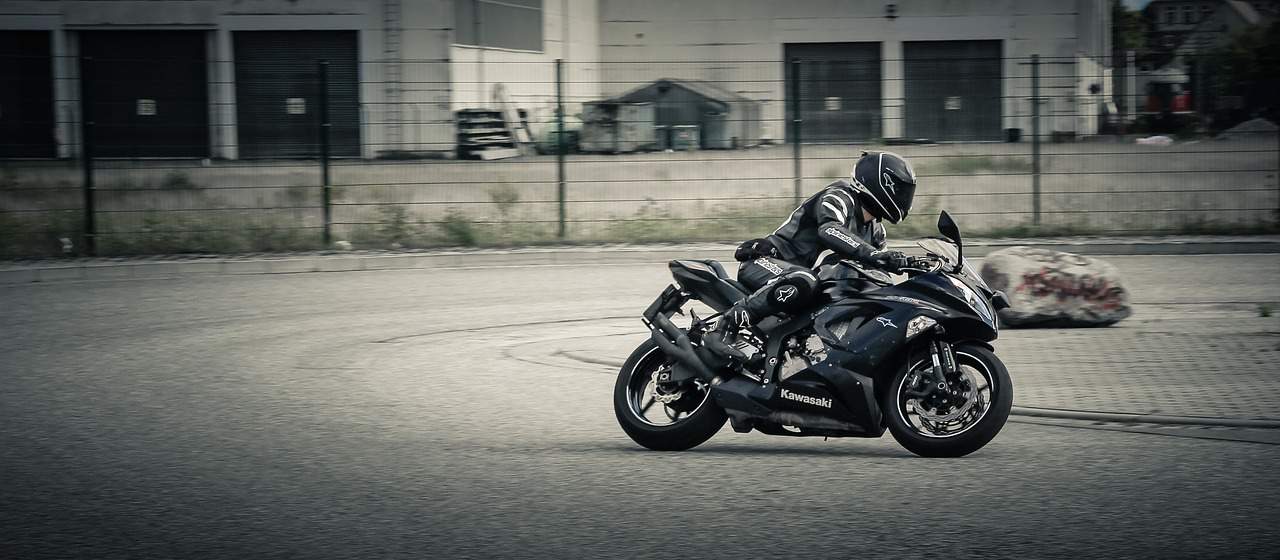
Don’t feel confident on your motorcycle and would like to improve your riding technique? Here are the best exercises to polish your motorcycling skills.
Knowledge of road rules is not everything. Proper driving technique is also very important. This applies both to cars and motorcycles. If we regularly polish our skills, it will enable us to have maximum fun and benefit from everyday rides. In addition, we will contribute to increased safety on the road, while economical driving will allow us to make additional savings. It should be remembered that a person learns throughout life, and most learning comes from making mistakes. Proper experience is essential to be able to fully enjoy the capabilities of your beloved motorcycle.
Maintaining balance on a motorcycle is not as simple as it may seem. However, it is crucial for a ride to go without falling on either side. In order to feel confident on your motorcycle, you need to become familiar with its dimensions and get used to its weight. A good exercise may be to walk around the vehicle a few times, holding it so that it does not fall over. This will give you a tangible feel for the weight and handling of the bike. It’s also a good idea to ride the bike backwards and forwards, gripping the handlebars and the seat.
Slow riding straight is very common when crossing a busy city. It’s a good idea to learn how to keep your balance, even at low speeds, to avoid unpleasant situations such as scratching someone’s car. The basic technique that is used for this type of maneuver is the so-called “dead drag” technique. This is based on using the rear wheel brake to maintain a predetermined speed while operating the throttle in order to avoid throttling the engine. When practicing, you must first shift into first gear. When the vehicle starts moving, we have to let go of the clutch completely. Then very gently and precisely rest your foot on the foot brake, all the time controlling the pressure. When the engine starts to throttle, increase the revs slightly by adding gas
Eight is one of the most hated exercises by motorcyclists because it is not one of the easiest, but practicing it will improve your concentration and composure. During the exercise, you need to place two obstacles at a distance of about five meters and then, using the counterbalance technique, try to perform the figure eight
The technique of counterbalance is that the driver leans in the opposite direction to that in which the motorcycle is leaning. The exercise should be done primarily slowly – using the slow driving skills discussed in the previous paragraph. If, after many attempts, you continue to have problems with this exercise, it is a good idea to think about increasing the distance between obstacles. If, however, you can handle this exercise right away, then try to gradually decrease the distances between them.
Every motorcyclist is bound to face a situation where a 180-degree turn is required at some point. While on a wide roadway no one should have a problem with this, in the case of a narrow roadway the matter is a bit more complicated. The turning maneuver on a motorcycle is called a “double left turn”. Depending on whether the maneuver will be performed after stopping the vehicle or without stopping, a different technique should be used
In the former case, the “dead pull” discussed earlier should be used. When turning, press down from above on the appropriate end of the steering wheel to prevent the vehicle from lifting. When turning left, push off with your left hand from the left side of the steering wheel, while pressing your right knee into the tank. When turning “from the road”, centrifugal force is used. When turning, lean inward with the motorcycle, which will offset its effect. During this maneuver, be sure to put weight on the footrest that is outside of the turn. This will increase our stability.
What is also worth practicing is the ability to brake. This maneuver will be used every time a driver decides to go for a ride, so it’s a good idea to make sure you handle it as well as possible. Situations vary, and some of them may require motorcyclists to react quickly and with proper technique. Braking can be practiced in a number of ways. One of them is to create two gates out of cones. You should accelerate your vehicle, starting at the first gate and braking at the second gate. The optimum speed will be around 30 km/h. During this exercise, you should simultaneously use the hand brake and the foot brake
(photo: pixabay.com)